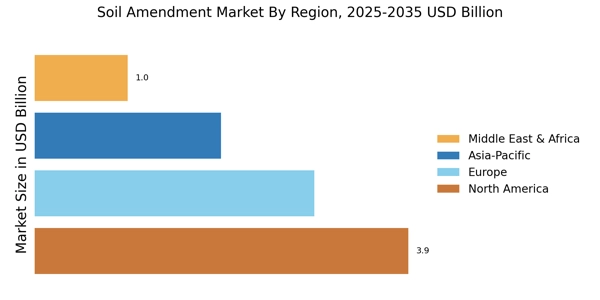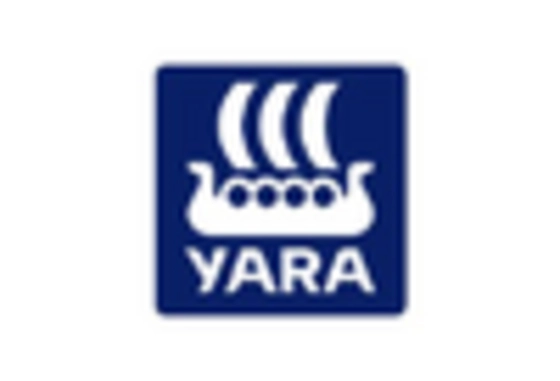Growing Awareness of Soil Health
There is a growing awareness among farmers and agricultural stakeholders regarding the importance of soil health, which is propelling the Soil Amendment Market forward. Educational initiatives and research have highlighted the critical role that soil amendments play in maintaining soil fertility and structure. This awareness is reflected in the increasing adoption of soil testing and amendment practices. Data suggests that regions with higher soil health awareness have seen a 20% increase in the application of soil amendments. Consequently, this trend is expected to continue, further driving the Soil Amendment Market.
Rising Demand for Organic Produce
The Soil Amendment Market is closely linked to the rising demand for organic produce. As consumers become more health-conscious and environmentally aware, the preference for organic products is increasing. This trend is driving farmers to adopt organic farming practices, which often necessitate the use of organic soil amendments. Market data indicates that the organic food sector is expected to grow at a compound annual growth rate of over 10% in the coming years. This growth is likely to stimulate the Soil Amendment Market as farmers seek effective amendments to support organic cultivation.
Increase in Agricultural Productivity
The Soil Amendment Market is experiencing a notable increase in demand due to the rising need for enhanced agricultural productivity. Farmers are increasingly recognizing that soil amendments can significantly improve soil health, leading to higher crop yields. According to recent data, the use of organic amendments can increase crop yields by up to 30%. This trend is particularly evident in regions where soil degradation has been a persistent issue. As agricultural practices evolve, the Soil Amendment Market is likely to see sustained growth driven by the necessity for efficient food production systems.
Regulatory Support for Sustainable Practices
The Soil Amendment Market is benefiting from regulatory support aimed at promoting sustainable agricultural practices. Governments are increasingly implementing policies that encourage the use of organic and environmentally friendly soil amendments. For instance, incentives for organic farming and restrictions on synthetic fertilizers are leading to a shift in farming practices. This regulatory environment is fostering innovation within the Soil Amendment Market, as companies develop new products that comply with these regulations. The market is projected to grow as more farmers seek compliant solutions to enhance soil quality.
Technological Innovations in Soil Amendment Products
Technological innovations are playing a pivotal role in shaping the Soil Amendment Market. Advances in product formulation and application techniques are enhancing the effectiveness of soil amendments. For example, the development of slow-release fertilizers and biochar products is gaining traction among farmers. These innovations not only improve soil health but also optimize nutrient availability for crops. Market analysis suggests that the introduction of new technologies could lead to a 15% increase in the efficiency of soil amendments. As these technologies become more accessible, the Soil Amendment Market is poised for significant growth.


















Leave a Comment